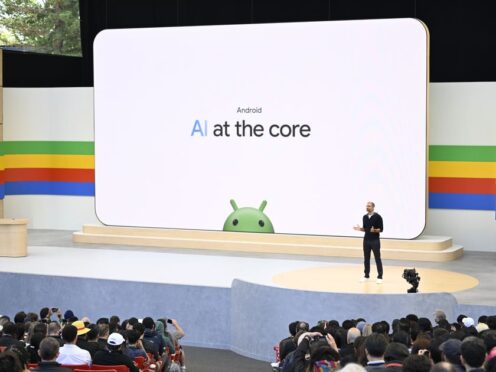Google’s latest AI updates are a “direct response” to ChatGPT’s early dominance of the generative artificial intelligence space, industry experts have said.
The tech giant has announced a wide range of new tools powered by its Gemini AI model, including abilities to use text, image and video to interact with its AI assistant across different Google apps.
The updates came a day after ChatGPT maker OpenAI showed off developments to the popular chatbot which enable it to have more human-like conversations and respond more easily to voice prompts, as well as text, audio and visual prompts – a process known as being multimodal.
Industry expert and Emarketer analyst Jacob Bourne said: “Coming on the heels of OpenAI’s GPT-4o announcement, it’s no surprise that AI is a major theme at Google’s I/O, including a demo of Gemini’s latest multimodal capabilities as a direct response to ChatGPT’s voice mode.
“By showcasing its latest models and how they’ll power existing products with strong consumer reach, Google is demonstrating how it can effectively differentiate itself from rivals.”
Leo Gebbie from CCS Insight said this area of the technology will become a key battleground between the biggest AI firms.
“A major push from Google – and from competitors like OpenAI – is in multimodal AI, which is intended to make it easier to engage with the technology across a range of input and outputs,” he said.
“This promises to make AI more contextually aware and allow more natural interactions through voice commands or by sharing images and video.
“Multimodal AI holds huge promise in building assistants which are more useful in more places than ever before.
“Plenty of us have experienced the limitations of using voice assistants like Alexa, Siri and Google’s own Assistant, where conversations are currently limited and stilted. However, more intelligent multimodal AI should unlock a far more conversational and natural user experience.”
Another of the major announcements from Google during its I/O developer conference was its plan to reinvent its search engine around generative AI to help build responses to search queries.
As part of the update, Google is to begin rolling out what it calls AI Overviews to US users, which will show AI-generated suggestions in response to searches at the top of results, including tips, hints and suggestions from different perspectives.
Mr Bourne said this update could define Google’s success in the AI tech arms race.
“The AI Overviews launch reception this week will be an indicator of how well Google can adapt its Search product to meet the demands of the generative AI era,” he said.
“To maintain its competitive edge and satisfy investors, Google will need to focus on translating its AI innovations into profitable products and services at scale.”
Mr Gebbie added that Google’s other key focus, so-called AI agents which are always available to help with any task, would also be a key marker of the company’s success in AI.
“A major theme during I/O was the concept of an AI agent. The concept of an intelligent personal assistant which can answer emails automatically, block spam calls, and manage diaries sounds hugely promising and would likely appeal to many people as a way to manage their personal and professional lives,” he said.
“The critical challenge to overcome remains trust. An AI assistant is only useful as long as it is fully reliable, and there have been plenty of high-profile examples of leading AI models making embarrassing mistakes.
“Placing full trust in an AI agent to organise your life still feels like something of a risky decision as a result.
“Poor reviews of recent AI gadgets like the Humane AI Pin and the Rabbit R1 have dented confidence in this area of technology, as reviewers have found the technology unable to deliver on the promise of meaningfully understanding the world around a user.
“However, Google’s differentiation here is that it is not bringing its technologies to one specific device.
“Instead, its AI capabilities span a huge array of devices and services, with billions of people using Google products worldwide. Users of Google hardware like Pixel smartphones stand to benefit the most, but for anyone who uses apps like Google Maps or Gmail, the infusion of AI should deliver a more intelligent user experience.”
